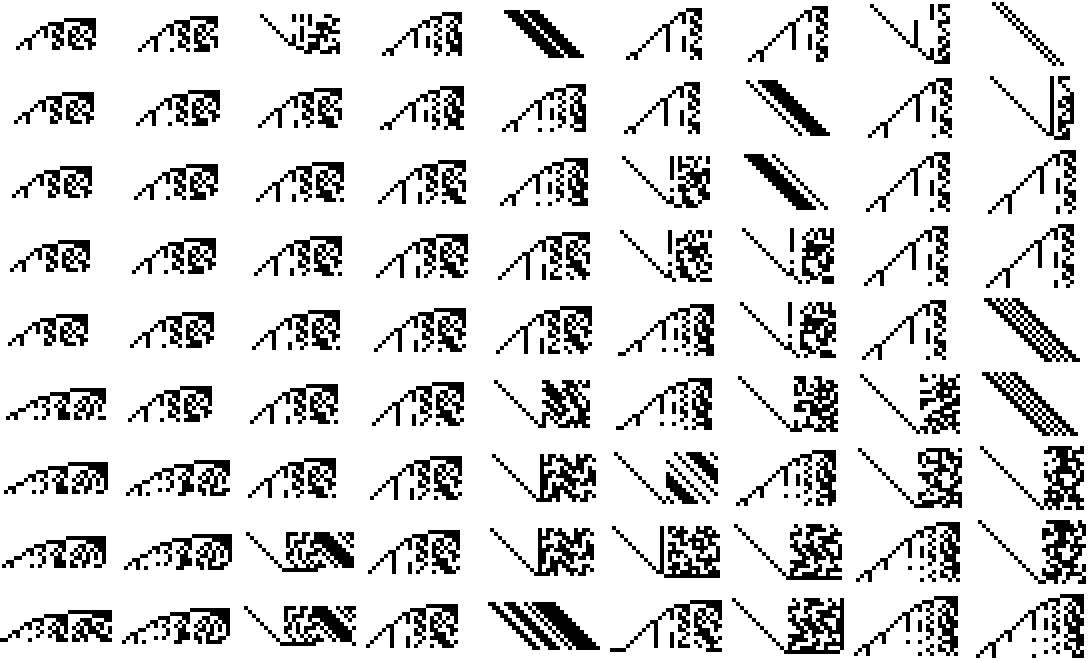Wolfram Data Repository
Immediate Computable Access to Curated Contributed Data
Linear codes provide an optimal way for transmitting blocks of data over noisy channels
Originator: Andries E. Brouwer and Markus Grassl
(808 elements)
Retrieve the default content:
| In[1]:= |
| Out[1]= |  |
Show data for the Golay code (A further exploration can be found at the Wolfram Demonstration Golay Code):
| In[2]:= |
| Out[2]= |  |
Generate a triangle of optimal distances with the blocklength (length of the codeword) on the left and the dimension (number of data bits) on the bottom:
| In[3]:= | ![With[{data = ResourceData["c055e245-f65e-4a21-a807-6346617f515a"]}, Style[Text@
Grid[Append[
PadRight[Prepend[#, #[[1]]], 40, ""] & /@ Table[data[{a, b}]["Distance"], {a, 3, 40}, {b, 1, a - 1}], Join[{""}, Range[1, 39]]], Dividers -> {{2 -> True}, {39 -> True}}], 10]]](https://www.wolframcloud.com/obj/resourcesystem/images/c05/c055e245-f65e-4a21-a807-6346617f515a/62a8ec262e284a92.png) |
| Out[3]= |  |
Generate a grid of some of the optimal generator matrices:
| In[4]:= | ![With[{data = ResourceData["c055e245-f65e-4a21-a807-6346617f515a"]}, Grid[Table[
ArrayPlot[data[{a, b}]["GeneratorMatrix"], PixelConstrained -> True, ImageSize -> {2 data[{a, b}]["BlockLength"] + 4, 2 data[{a, b}]["Dimension"] + 4}, Frame -> False], {a, 20, 28}, {b, 8, 16}]]]](https://www.wolframcloud.com/obj/resourcesystem/images/c05/c055e245-f65e-4a21-a807-6346617f515a/7ca6e70c72b85e05.png) |
| Out[4]= |  |
Wolfram Research, "Linear Codes" from the Wolfram Data Repository (2017) https://doi.org/10.24097/wolfram.23530.data